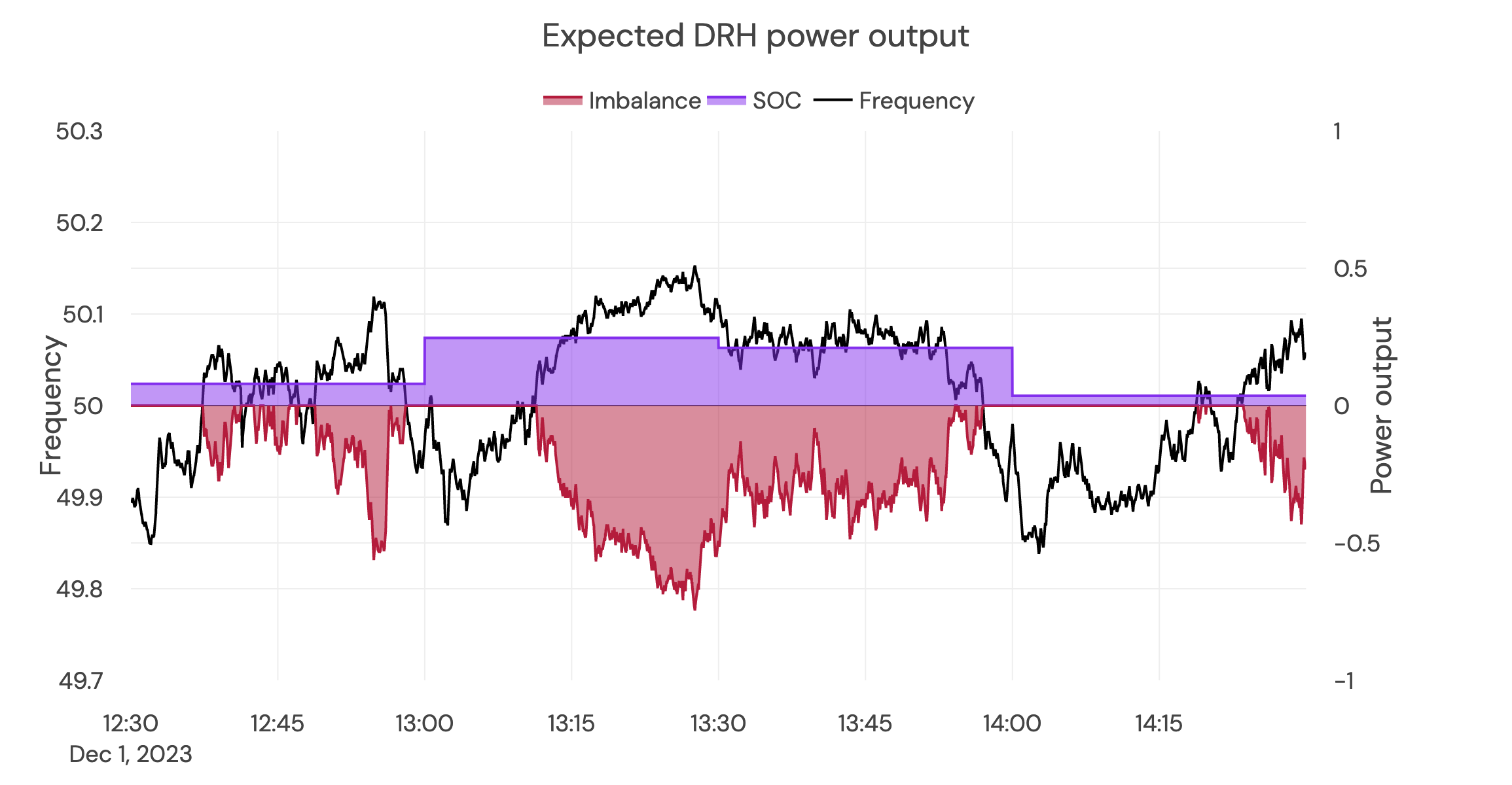Frequency Response
Battery assets receive a significant portion of their revenue delivering frequency response services
Dynamic Response Services
The suite of Dynamic Response Services - Dynamic Containment (DC), Dynamic Moderation (DM), and Dynamic Regulation (DR) - are a significant portion of battery revenues. Assets bid into these services day-ahead with results published by ESO. We use the published clearing price and contracted volume for each asset to determine revenues for each asset, from each of the Dynamic Response Services.
Imbalance payments
By providing frequency response, batteries have to charge and discharge in response to deviations in grid frequency. This energy has to be bought or sold at the system price (also known as the imbalance, or cashout price). To calculate Imbalance payments, we estimate the volume of energy required to deliver the service by comparing against 1 Hz frequency data. This dataset is published at the end of the month, so whilst we wait for this dataset we estimate the energy required using the 1 Hz frequency for the equivalent time period last year.

Balancing Mechanism registered units (BMUs) receive ABSVD payments/charges, which cover the cost/revenue from exporting/importing energy whilst delivering Dynamic Response Services. As such, we don't show any Imbalance payments for BMUs, because they're entirely recovered through ABSVD, and therefore have no impact on the net revenue of an asset.
For Non-BMUs, we show the imbalance payments assets must make to deliver each service. These are particularly high for the services which have a high throughput - ie Dynamic Regulation.
State of charge management
Delivering frequency response causes a battery to charge or discharge, changing its state of charge. This is managed by the battery operator, who must ensure it can continue to deliver the service it is contracted for.
We assume that enough energy is bought or sold for managing state of charge in each settlement period so that there is no impact on the asset's state of charge from delivering frequency response across the settlement period. In other words - the volume of energy calculated for imbalance payments is equal to the energy used for state of charge management.
However, importing and exporting energy from a battery is not 100% efficient. We assume import efficiencies of 85% and export efficiencies of 99%. Therefore, to maintain a steady state of charge while the battery is performing high frequency response (i.e., importing energy), the battery must also export energy. We assume it exports, or sells, 0.85 times the energy it imports as a result of doing high Dynamic Response services. When performing low frequency response (i.e., exporting energy), the battery imports energy to manage state of charge. We assume it imports, or buys, 1/0.99 times the energy it exports as a result of doing high Dynamic Response services.

For non-BMUs, we assume this energy is bought and sold on the imbalance market at the system price, and this is shown in the revenue breakdown for each asset.
For BMUs, state-of-charge management activities are reported under physical notifications, as units must notify the control room 1 hour ahead of delivery what their power output will be. So, we assume BMUs trade energy for state of charge management on the wholesale market. We do not show a state of charge management revenue item for BMUs in the Benchmark as they fall within the wholesale revenues.
Performance penalties
Assets contracted to provide Dynamic Response Services are subject to performance monitoring. Failure to deliver services in line with the service requirements results in fines levied against the operator. As there exists no publicly available data on performance penalties, we cannot include these penalties in the Benchmark.
Updated 2 months ago